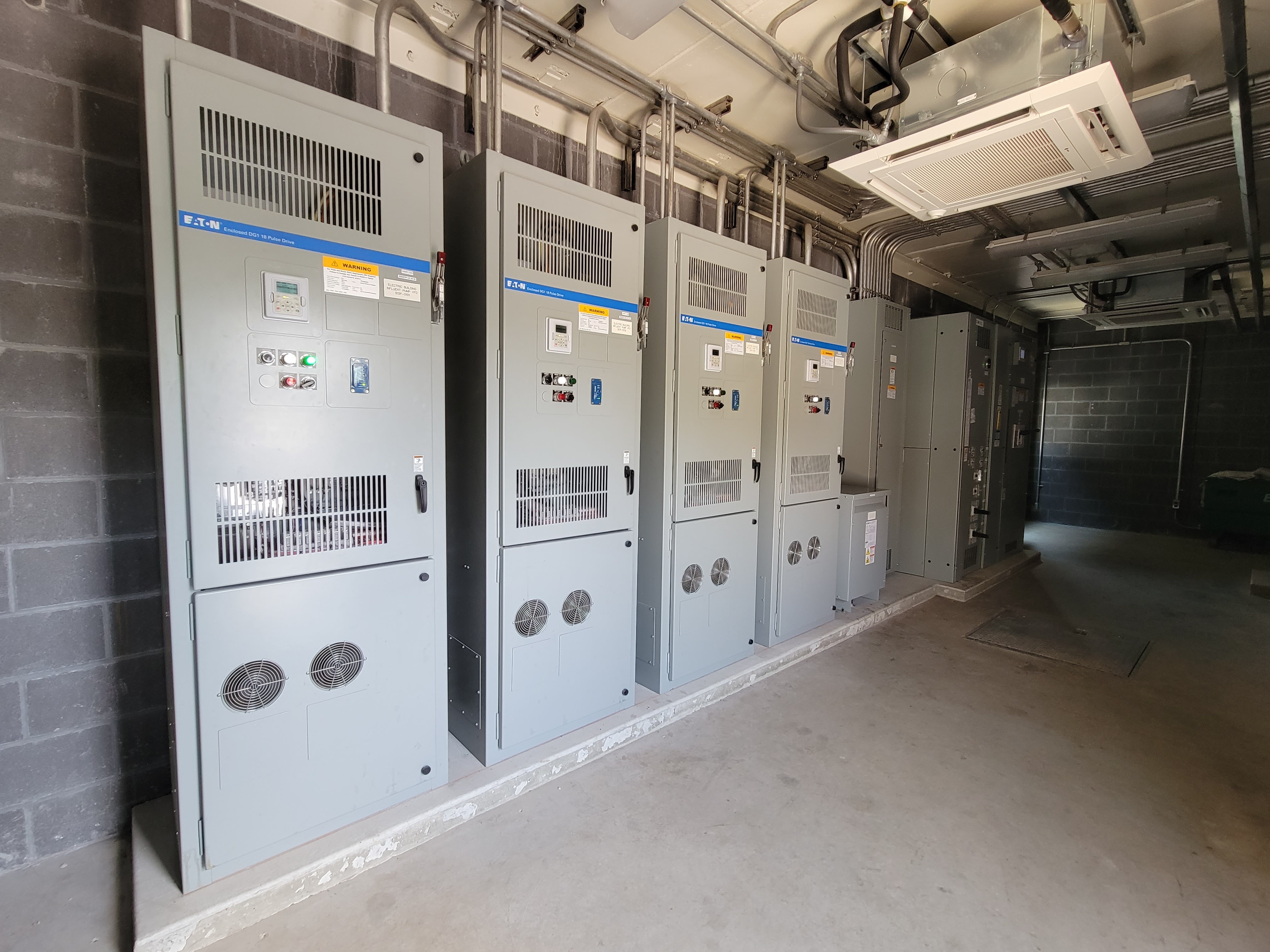
1.83 million kWh
60%
$200,965*
* Estimated Annual Energy Cost Savings is based on a blended rate of $0.11/kWh
Go to peco.com/Business and learn how you can make your business more energy efficient, while saving money.
By replacing 70-year-old pumps and blowers with new Variable Frequency Drive (VFD) equipment, the facility decreased energy usage by 60%.
Since 1932, the Norristown Wastewater Treatment Plant has been making local water clean again. The process of removing pollutants from our wastewater is a complex one, but it goes something like this: Gravity brings wastewater to the plant, the water passes through screens to remove debris like wood and rocks. Then, it passes through large pumps and blowers.
These massive motor-driven pieces of equipment are the workhorses of the Norristown plant. Pumps move the wastewater through systems that remove pollutants and bacteria; blowers aerate the water, ridding it of unwanted gasses and grit.
That takes a lot of energy. The Norristown Municipal Waste Authority last installed pumps and blowers in the 1950s. “The equipment we had was vintage,” said Barry Thompson, director of the Authority. So, when the Authority embarked on a project to save energy and operating costs by upgrading outdated equipment with PECO, the old pumps and blowers were top of the list.
“The Most Inefficient Equipment We Had”
The age of the facility’s pumps and blowers presented a number of problems. Since they were so old, “We couldn’t get parts for them if we wanted to,” Thompson said. The pumps and blowers were also required to run constantly, and were “two of the most inefficient pieces of equipment we had,” said John Larson, manager of the Norristown plant. Though any new pumps and blowers would have saved energy, the team specifically sought out specialized high-energy efficiency replacements that utilized variable frequency drives (VFDs). These VFDs allow motor-driven devices such as fans, pumps and automation equipment to vary the rate of speed at which they operate to match system demands. They use only the energy they need, when they need it, reducing energy use and saving money.
An Efficiency Upgrade, with Extra Benefits
Though the energy upgrade involved fully replacing vital (and expensive) equipment, the Authority’s new VFD blowers and pumps offer more control and use 60% less energy than the old equipment. This was a welcome savings since, according to Larson, “Maximizing efficiency is our responsibility.” The energy savings resulting from the upgrade, plus the PECO incentives, helped mitigate rate increases for customers.
There were other benefits. The new equipment requires less maintenance and personnel, unlike the older blowers and pumps, which needed constant upkeep. “Now we have freed up a maintenance person to focus on other parts of the operation,” said Thompson. The new equipment also takes up less space, and was installed in an elevated building with flood-proof submersible pumps. “It’s a pleasant surprise,” Thompson said. “We are more flood resilient, and we’ve reclaimed a lot of space that we can now use for other things.”
Huge Rebates and Incentives Set Up a Cleaner Future
PECO incentives were “incredibly easy” to apply for, said Thompson and Larson. The 1.83 million kilowatt hour energy savings per year translated to the second largest incentive check in the history of the program.
Energy savings plus the massive PECO incentive put the Authority in position to knock off extra projects on their capital improvement plan. “With the PECO rebate, we were able to do more now,” said Thompson. The Authority is already looking forward to sewer rehabilitation programs that will help handle new growth and development in Norristown for the next decade.
John Larson, Manager of the Norristown Wastewater Treatment Plant
The project also represented a positive pivot toward saving energy and money. “Energy efficiency is almost always a second goal for us — because our primary directive is to treat the water and make sure it’s clean enough for discharge,” Larson said. “Now we’re thinking, how do we do that in the most efficient way possible.”
Visit peco.com/business to discover ways your business can save with energy efficient VFDs for motors and drives.